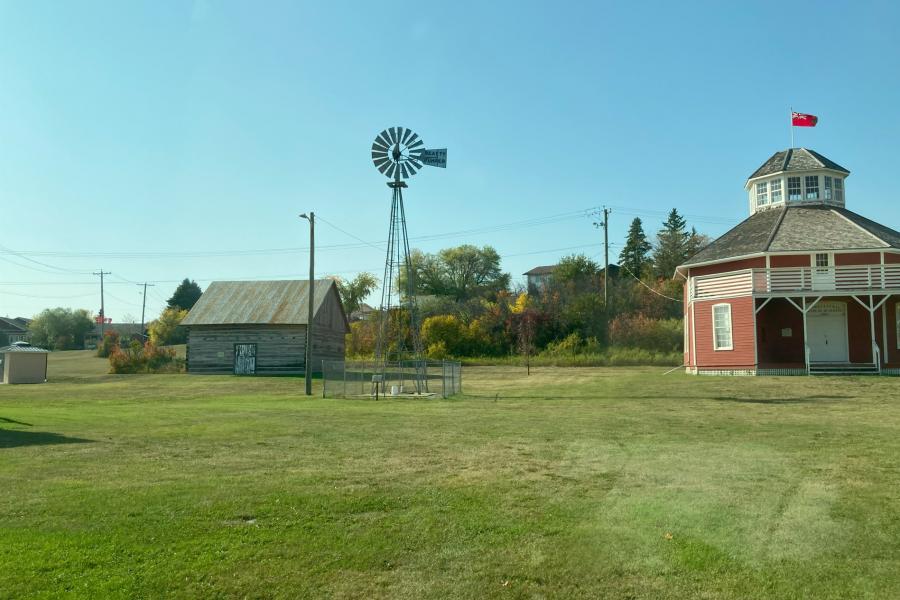Age-Friendly Minnedosa
Alandra Barairo, Rudolph Nsoh, Noah Penney, and Christopher Sones

Executive Summary
As people grow older, they can face challenges remaining in their community. This report discusses aspects of age-friendliness in Minnedosa, Manitoba. Nestled in Southwestern Manitoba along the Little Saskatchewan River, Minnedosa, a town of just over 2,500, has an aging population; Over 25% of the population is over the age of 65. In analyzing age-friendliness in the town, the World Health Organization’s (WHO’s) Age-Friendly Communities framework is used. This framework guides a discussion of age-friendliness across a variety of areas. The four discussed are housing, transportation, buildings and outdoor spaces, and social infrastructure.
In conducting this analysis, meetings were held with residents of the town, particularly older adults over the age of 65, as well as representatives of the community. Residents partook in activities and discussed the current state of the four areas of analysis, as well as their ideas for potential improvements. Based on the information gathered, precedents were studied in each area, and these precedents informed options that would be presented to the community as potential ways in which they might make their community more age friendly.
The initial stage of this analysis saw residents point to a number of challenges they face on a day-to-day basis. In terms of transportation, residents expressed concerns with the Handivan service as well as difficulty getting to other nearby regional centres. In terms of housing, residents noted the development of a new active living facility, residents of nearby smaller communities retiring in the town, a lack of potential land to build on, and the impacts of flooding of the river on the town. Social and Outdoor Spaces analysis saw similar trends, with residents expressing challenges with communication and barriers to social involvement, a desire for outdoor social spaces, and an interest in infrastructure improvements to outdoor spaces and facilities such as sidewalks. Residents also highlighted strengths in these areas as well.
In addition to this analysis with residents of the community, an overview of other contemporary challenges and an independent analysis of the community informed the directions that were taken in further steps. Precedent research was conducted, both for this report and for other similar reports being conducted for other regional communities, in several areas. These areas were those which appeared as themes across the region and in agefriendliness as expressed by residents and identified in the analysis. Options meant to provide potential next steps that communities might wish to take were then developed from informed analysis, independent analysis, and precedent research.
Options were intended to capture a variety of timeframes, potential levels of investment, and scales of impact. These characteristics led to the categorization of options into short- medium- and long-term. Options were further broken down as those intended for Minnedosa’s Main Street, neighbourhoods, and the whole community. Options for Transportation and Housing remained independent, while similarities between those of Buildings and Outdoor Spaces and Social Infrastructure led to the integration of options in those two areas. Options are wide-ranging, regarding such topics as active transportation and improved accessible and regional transportation, mixed-use and infill development, and wayfinding, shelter, and outdoor space improvements throughout the community.
Overall, this analysis is intended to serve as a guide to the Town of Minnedosa, providing a sample of the potential options it may wish to implement to improve agefriendliness within the community. While these options are not exhaustive, and this analysis was limited by timeframe, scale, and an inability to determine the needs of every older adult in the community, those outlined in this report are worthy of consideration and might help to improve the quality of life for all those who call Minnedosa home and choose to visit the town.
